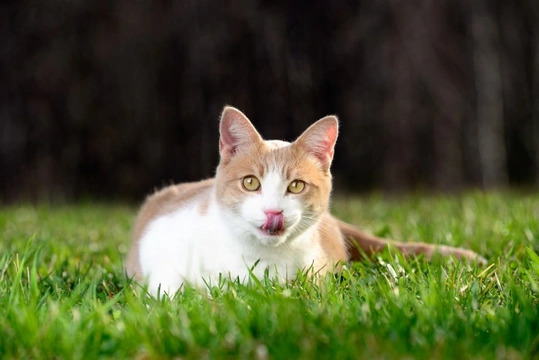
Why is my cat's tongue so rough?
Cats have amazing tongues and unlike their canine counterparts, they are rough and look quite weird too. A lot of research has been carried out into cats’ tongues and why they are made up the way they are with recent studies showing that a cat’s tongue is that much better at detangled and knotted hair than a hairbrush.
Hooks that act like detanglers
The hooks on a cat's tongue act like detanglers which means that when a hook comes across a knot or a snag, the hook rotates so that it can catch on to the snag that much better and it’s all thanks to the way a cat's tongue is constructed. These flexible hooks are extraordinary because when a cat is not licking or cleaning themselves, they lie perfectly flat on the tongue. This construction allows a cat to lick their coat's in one direction picking up loose hair in one single action as they come across them.
The rough hooks on a cat's tongue are referred to as papillae
When a cat licks you, their tongues feel incredibly rough and this is because of the small hooks that are found on them which are known as papillae. In humans, these are called taste buds but they are smooth unlike those on a cat's tongue. The reason a cat's papillae are so different is because they are longer and they contain a lot more keratin which is what gives them their rough, dry feel. Just why a cat's papillae have evolved to be like this remains a bit of a mystery, but what is known is that they really help cats keep their coats clean.
Studies show that cats don't taste sweet things
Research has shown that cats don't pick up on sweet things the way humans or other animals do when it comes to taste, but they could well taste other things that people cannot. The studies have established that cats taste things like adenosine triphosphate which is a substance that provides valuable energy to all living cells.
A cat's tongue helps keep them healthy
Cats clean their coats on a constant basis, but they also do this as a way of regulating their body temperature. By fluffing up a coat in the colder winter months, a cat is in fact keeping themselves warmer. Licking their coats during the summer helps them stay that much cooler when the weather is hot. Their tongues also play a crucial role in removing flakes of skin, dead, loose hair and dirt from their coats. The hair a cat swallows is typically digested by their stomach acid, but sometimes a hair ball can form which can be a problem especially in longer haired cats which is why it's a good idea to groom them on a regular basis to reduce the risk of this happening.
A dull, unkempt coat is sure sign there is something wrong
If a cat's coat looks unkempt and dull, it's a sure sign there may be something wrong and it could be that they have developed a nasty health condition. Cats love keeping themselves clean and go about it fastidiously. If they are not licking their coats and look dishevelled, it's time for a visit to the vet to check out what's going on.
Their tongue is an odd colour
A pale or darker coloured tongue could mean a cat is not feeling 100% and should be examined by a vet to see what's going on. When a cat's tongue is light in colour it is usually because they are anaemic. However, it their tongue is a darker than usual colour, it could well be that they are not receiving enough oxygen in their systems. If a cat coughs, constantly wheezes or shows a shortness of breath, it's time to get them along to the vet to establish what's going on.
Vets take a look at a cat's tongue when they go for health checks
When a vet examines a cat when they are taken for a regular check-up, they will look at your pet's tongue and gums because older cats are more prone to developing certain forms of cancer in their mouths. They are also more likely to have developed mouth ulcers which could be an indication they are suffering from kidney disease.
A cat's tongue when they drink water is quite amazing
Cats have a unique way of drinking water thanks to the way their tongues are constructed. Their tongues only skim the top of the water before darting back into their mouths leaving a trail of liquid as it does. It's essential for cats to drink lots of fresh, clean water so they remain well hydrated, but often they are quite secretive as to the amount of water they actually do drink which is why it's so important to make sure an older cat is fed wet food and encouraged to drink a lot of water as much as possible.



